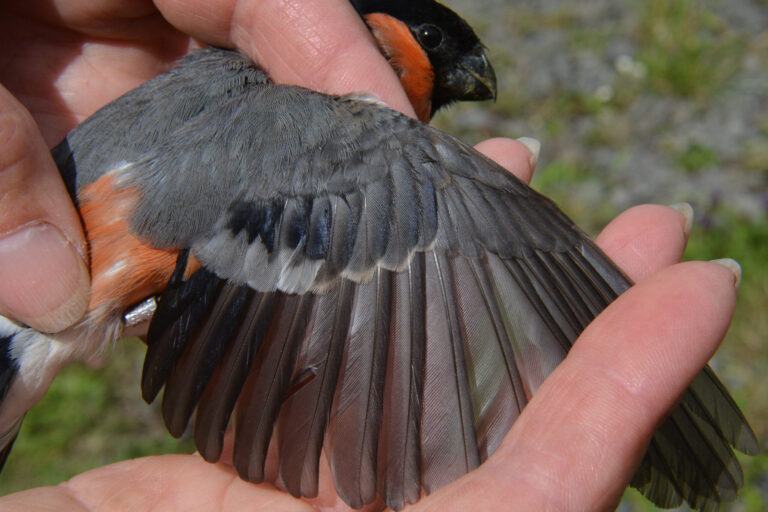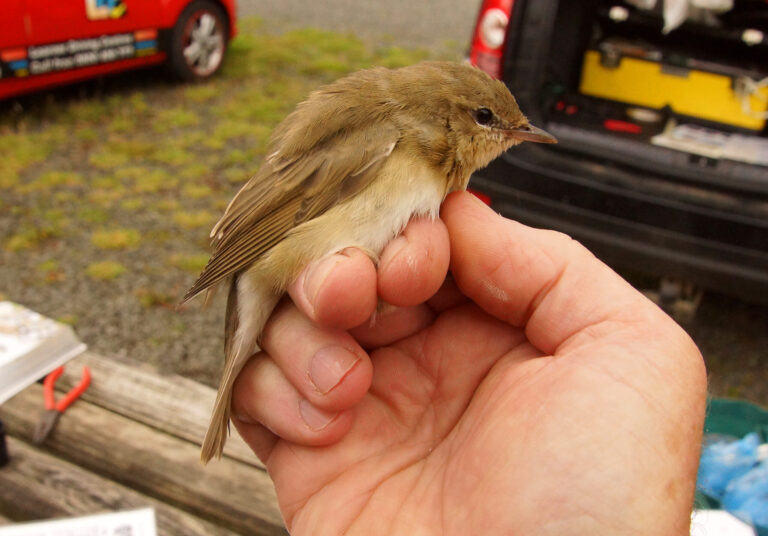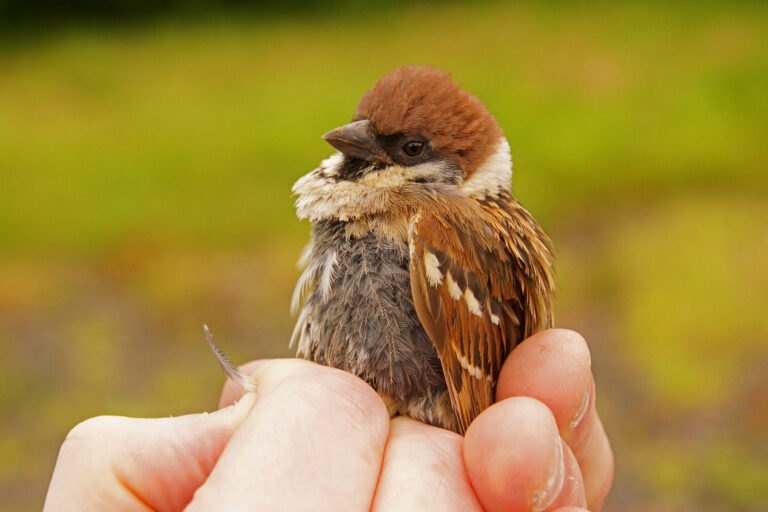We opened up the Howick Ringing Station on the 11/7/20 this year with an exceptional catch of 46 new birds and 4 retraps. Not surprisingly (this early in the season) most were local resident birds rather than migrants but we did catch some birds that will start to migrate south next month. However, starting with the re-traps; these included a Male Chaffinch first ringed as a juvenile in 2018. Many of the new birds were juvenile tits (Blue, Great and Coal); 3 juvenile Robins, a Dunnock or Hedge Accentor (not to be confused with any sort of sparrow!) and a Goldfinch. The soon to be migrating birds were two juvenile Chiffchaff (Warblers) and two adult Willow Warblers. Entertainment was provided by a juvenile Nuthatch, a very pecky female Great Spotted Woodpecker and a rather better behaved pair of adult Bullfinch (see pict.). I say adult – but it was still possible to see the several retained juvenile Greater Coverts in the wing of the male (towards the outer edge of the wing); indicating that it was only hatched last year (see pict.). If you don’t know which line of feathers are the Greater Coverts then go and turn up the introductory pages in a decent bird book and find a labelled diagram of the different parts of a wing.

Ringing on the 18th was something of a non-starter as we quickly abandoned the session due to rain. However, this was not before we had the re-capture of a female Chaffinch originally ringed in 2014 as a juvenile. This was along with four Great-Tits including one from 2018. We did a little better on the 19th capturing 10 new birds and 11 re-traps. The re-traps included a male Great Tit from 2019. More interestingly the new birds included two of this years Chiffchaffs and a young Willow Warbler. These giving the trainees ample opportunity to identify (and distinguish between) these two species in the hand. The Willow Warbler while still a ‘this year’s juvenile’ was clearly an ‘older’ juvenile. There was also a new juvenile Nuthatch – confirming that these birds had bred again successfully at Howick; which does seem to have a large population of these entertaining birds.
The 24th was a very good session with 50 new birds and 13 retraps. The retraps included a Bullfinch from 2018; while the new birds included juvenile Goldcrests, Robin, Chiffchaffs, Willow Warblers and Blackcap. The most interesting birds were two juvenile Garden Warblers. My trainees were unfamiliar with this bird which has a beautiful song but undistinguished plumage. One of them spent some time with a bird book and then a specialist ringers book to properly identify it. These birds are just starting their migration to winter quarters in Africa; from Senegal to Kenya and south to Angola. See pict.)

We also captured a new Tree Sparrow which on first glance looks like it’s wearing a dark waistcoat. These are breast feathers that are very worn and dark (see pict.) I don’t know what causes this effect although I have also seen it on the occasional Wren.

The 31st was exceptionally sunny and warm (and with a gradually developing breeze) and we only captured 11 new birds and 5 retraps. However, female Chaffinch ‘D532693’ proved interesting as it had been originally ringed back in July 2014 (and recaptured only once before in 2015).
This next month we will check on a few Barn Owl boxes for second (or late) broods. Given how early some of this years Barn Owls nested it is possible that we might find some. Its generally considered that the offspring from these late nests are less likely to survive the winter but we did have an example this year of a bird that was only ringed itself as a single owlet on the 13/8/19 south of the River Aln that subsequently was found as the successful breeding male at a site near Longhorsley with its own two very well-grown young being ringed on the 1/6/20!
We are currently limited to 6 people at a time at the Howick Ringing Station, but this has not proved a problem to date.
Best Regards
Phil Hanmer
S Ringer; Natural History Society of Northumbria Ringing Group (Hancock Museum)
E-mail: tytoalbas@btinternet.com